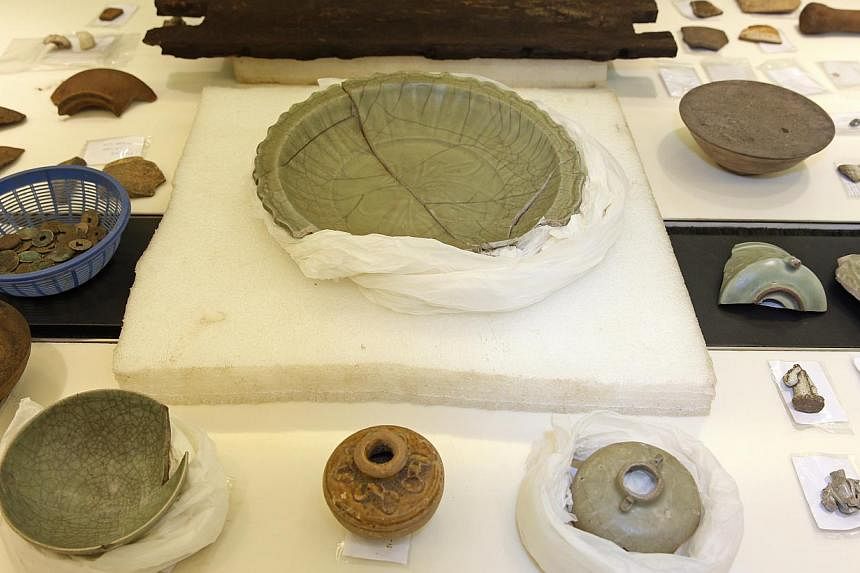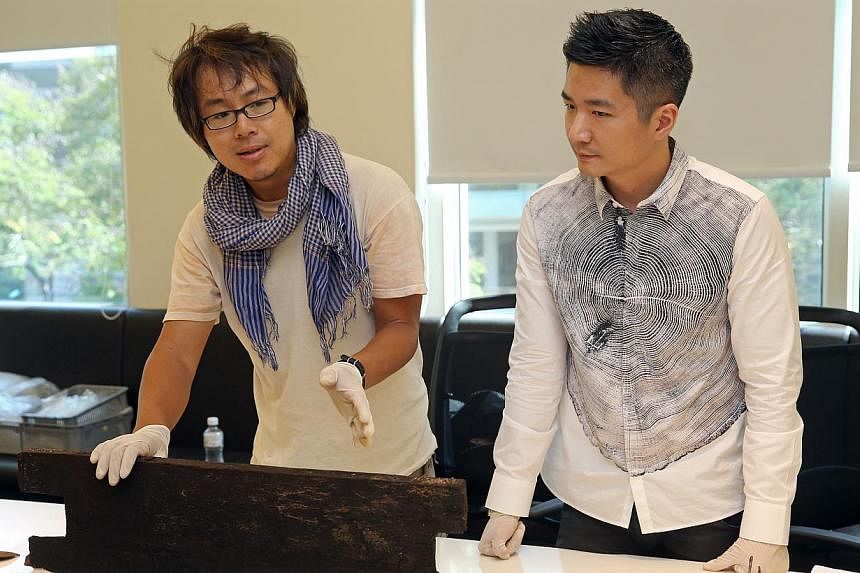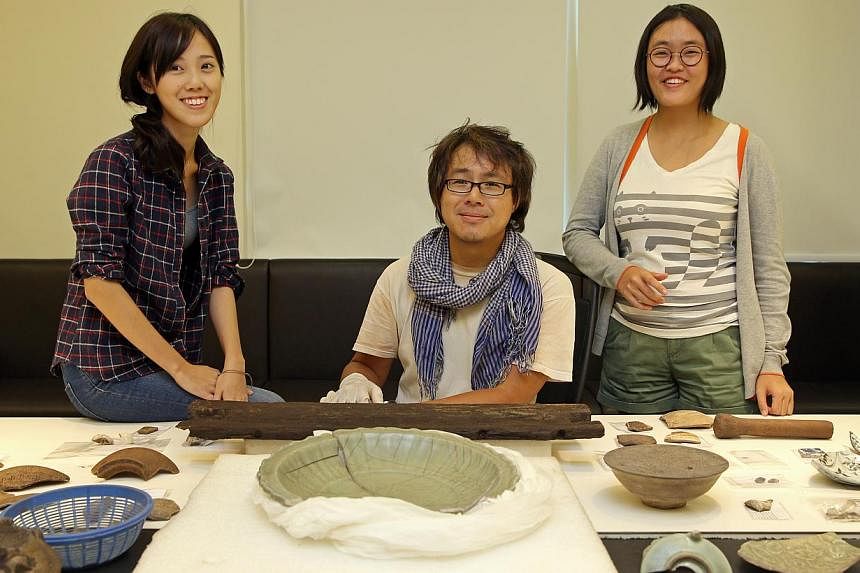SINGAPORE - Ancient Temasek could have had an established government with a head ruler or chieftain in the late 14th century and 15th century.
The first evidence of this was unearthed in a 10-week long archaeological dig, the biggest ever here, that wrapped up on Sunday at Empress Place. A team led by archaeologist Lim Chen Sian discovered Chinese imperial grade ceramics bestowed by the Ming Dynasty emperor Hong Wu who ruled between 1375 and 1425 to overseas leaders.
The excavation started on Feb 2 and was organised by the National Heritage Board (NHB) in partnership with the Nalanda-Sriwijaya Centre of the Institute of Southeast Asian Studies.
The Urban Redevelopment Authority had given NHB the nod to conduct the dig, alongside works to develop an integrated arts, culture and lifestyle precinct there for Singapore's Jubilee Year.
Other artefacts uncovered as part of the 2.5 tonne haul include 700-year-old timber planks, likely the first time that items suggesting maritime activity in ancient Temasek had been found.
Mr Lim said: "The timber was likely part of a structure of an ancient ship and the workmanship is typical of the South-east Asian style of ship building. We've always known about Temasek's maritime activity but we've never had physical evidence of this until now."
NHB's group director of policy Alvin Tan said the board is "very happy with the results". "We hit the archaeological jackpot in terms of quality and quantity at this site," he said.
Due to the unexpected volume of artefacts, the team was also given a month's extension to continue working on three of 13 zones there.
Other finds include thousands of 700-year-old Chinese coins, stoneware used to store condiments, porcelain pieces fired up in the Yuan Dynasty, a gold ring, a rare gold coin from the 16th to 17th century Johor Sultanate and Buddhist figurines across the site.
Mr Lim believes the range of artefacts found at the Empress Place dig site, near the Singapore River, suggests the area could have been home to a bazaar or market place.
The archaeological team will spend the next two to three years cleaning, sorting and analysing the artefacts. NHB will decide thereafter if they will become part of the national collection and go on show in future exhibitions.




